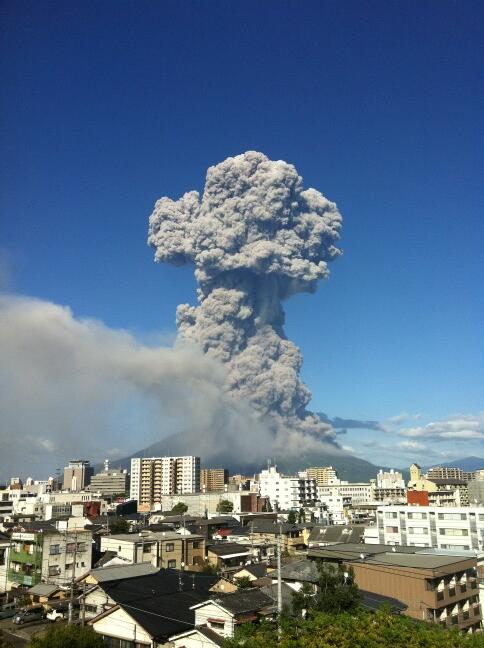
When it comes to terrifying displays of the power of Mother Nature, Japan never fails to deliver. These incredible photos capture the volcanic eruption off the coast of Kyuushu yesterday afternoon.
At 4:31 in the afternoon on August 18, the calm of Japan’s southernmost main island was shattered when the volcano of Sakurajima, in Kagoshima Prefecture, erupted.
The smoke from the explosion billowed up to 5,000 meters, the highest on record from the Showa crater. There were several small-scale pyroclastic flows (extremely fast-moving currents of hot gas and rocks) which traveled around 1 kilometre to the South East. These can have devastating consequences, but luckily the area around the volcano is uninhabited.
Kagoshima City turned dark as the cloud from the explosion blocked out the sun and ash rained down upon the city. The ash continued to fall for over an hour, and residents are continuing to wear masks as a precaution.
Visibility was compromised, causing delays on the trains and misery for tourists trying to make their way home at the end of Japan’s Obon summer holiday week. Part of the JR Nippō line that runs through Kagoshima Prefecture was shut down for nearly an hour and a half.
Sakurajima has several craters across its three peaks. According to the Kagoshima area meteorological observatory, the Showa crater on the southern peak (Minami-dake) erupted in 2006 after 58 years of inactivity, and has been relatively active since then. This is Sakurajima’s 500th eruption this year – what timing!
Professor Iguchi Masato of the Volcano Research Centre at the Disaster Prevention Research Centre of Kyoto University says “This is the biggest eruption from the Showa crater, however this does not immediately lead us to predict a further large-scale eruption.” The eruption warning level remains at 3 (restricted access).
Apparently, when compared to the huge eruption from the southern summit crater in 1914, this explosion is actually quite small-scale. The 1914 eruption was the biggest in twentieth century Japan, and resulted in significant changes to the landscape and tides of the area. It is estimated that smoke plumes at the time reached heights of 18,000 metres – over three times the scale of this one.
Yesterday’s eruption might be classified as “small-scale”, a mere belch next to the 1914 projectile vomit of lava and ash, but it still looks mighty impressive!
Source: Asahi Shinbun Digital
Images: HimaSoku, Twitter